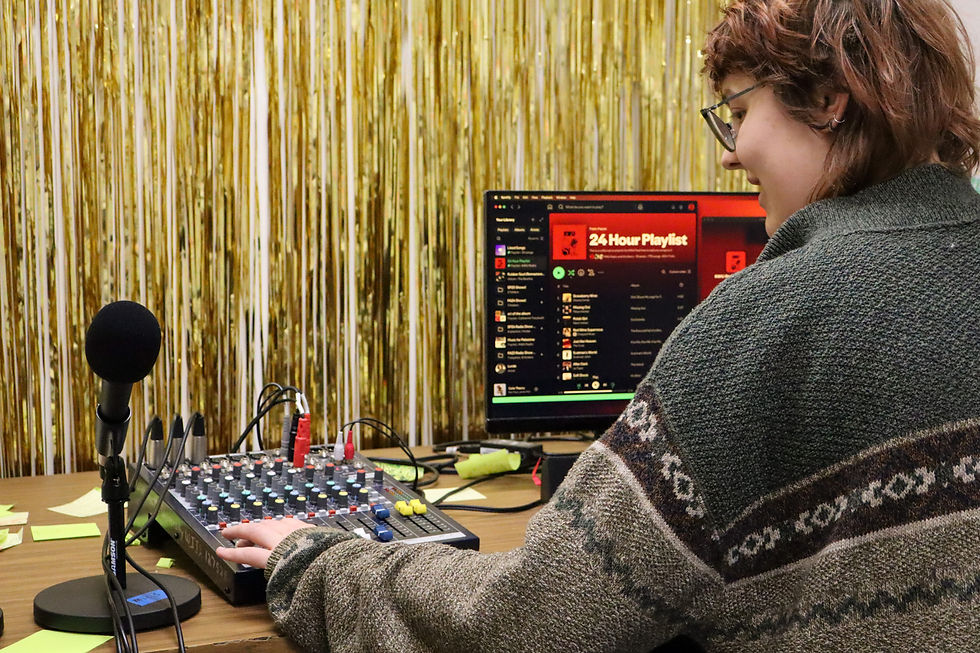Willamette bookstore to implement per-credit model for 2024-25 year
- Nardin Ishak, Staff Writer
- Apr 22, 2024
- 4 min read
Updated: Apr 22, 2024

In an attempt to prevent the removal of Willamette University’s bookstore, a new per-credit model has been confirmed to take place for the 2024-25 academic year with the hopes of increasing utilization of the bookstore.
The new per-credit model is a course material delivery program offered as a solution by Barnes and Noble, the university bookstore’s partner for the past three years, to increase bookstore sales. The model has been successful after implementation on over 200 other college campuses across the country. It offers an expanded choice for students on their textbook purchases by charging $20 per credit hour, allowing students to have access to however many textbooks needed as assigned by the instructor for each course. About a month before classes begin, emails will be sent out notifying students of the textbook materials assigned by each of their instructors. Students can choose to opt out at that time and until the add/drop period deadline, which provides a 30-day window. After opting out, students can still purchase all needed materials from the bookstore a la carte as normal.

If a student chooses to stay opted in as per the default of the model, they will then choose the option of physical or digital textbooks unless specified by the instructor, as well as the delivery method. Digital textbooks will be made available through Canvas, while physical textbooks can be delivered to the university bookstore located in Putnam University Center or to the student’s chosen home address. It is notable that all physical textbooks are rentals, including lab manuals, and must be returned at the end of each semester to be reused by other students. Students can choose to purchase any chosen textbooks at the end of the semester at a reduced but additional price.
As for payment, it is required to pay for the total of all credits signed up for each semester if a student chooses to opt in, regardless of whether or not they require textbooks. Registered credits exclude courses ending in “x.” An example model of this payment system could look like $240 for 12 credits and $360 for 18 credits. Additionally, the model will exclude non-textbook items such as lab goggles, art supplies, calculators, etc., but all will still be available for purchase at the bookstore. The model adds the textbook fees to the student’s calculated tuition and fees package, allowing for financial aid to be applied to cover the costs if applicable.
Dean of the College of Arts & Sciences Ruth Feingold explained that the current bookstore model is being discontinued by Barnes and Noble at universities of similar size to Willamette and said that the company required implementation of a different model to continue the partnership.
“It may not have been my choice to [implement the per-credit model], but it just adds an additional option,” said Feingold. “It’s not a big annoyance to opt out,” she added.
Feingold noted that only 30% of current students utilize the bookstore, causing a loss of money for both the university as well as Barnes and Noble. The new model is expected to increase student purchases from the bookstore to 80%, which will be profitable for both parties involved. Using the new model, students are expected to save 35-50% on average over purchasing books. Feingold invited faculty members as well as Associated Students of Willamette University (ASWU) to discuss the new model when the idea first arose back in the fall of 2023.

“Generally speaking, [faculty and students] asked a lot of the right questions that helped us and informed us on how to work better with Barnes and Noble,” said Associate Vice President of Budget and Facilities Anne Gallagher.
Dean Feingold added that there were initial suspicions from faculty and students regarding the new model, but assured that the Frequently Asked Questions web page released on April 22 evolved from the concerns that had been brought up to the table during departmental chair meetings where the College Council student representatives were also present.
“I was worried it was a capitalist trap that would force students to spend more money than needed,” said history professor William Smaldone.
After his initial concerns were answered including the fact that students can just opt out, Smaldone is optimistic that the new model will be effective in keeping the bookstore open and increasing sales, as well as be cheaper for some students who take courses such as his. He recalls having to reassign a core textbook in one of his history courses after the price doubled to over one hundred dollars with consideration that it was only one of five other assigned texts.
“I think it is a positive option,” said Gallagher. “There were several rounds of communication, Dan Valles (Chief Operating Officer) is ready with a comprehensive communication package so there will be opportunity for students to educate themselves.” Feingold encourages students to be informed consumers and opt in or out as they see fit depending on their courses and needs.




Comments